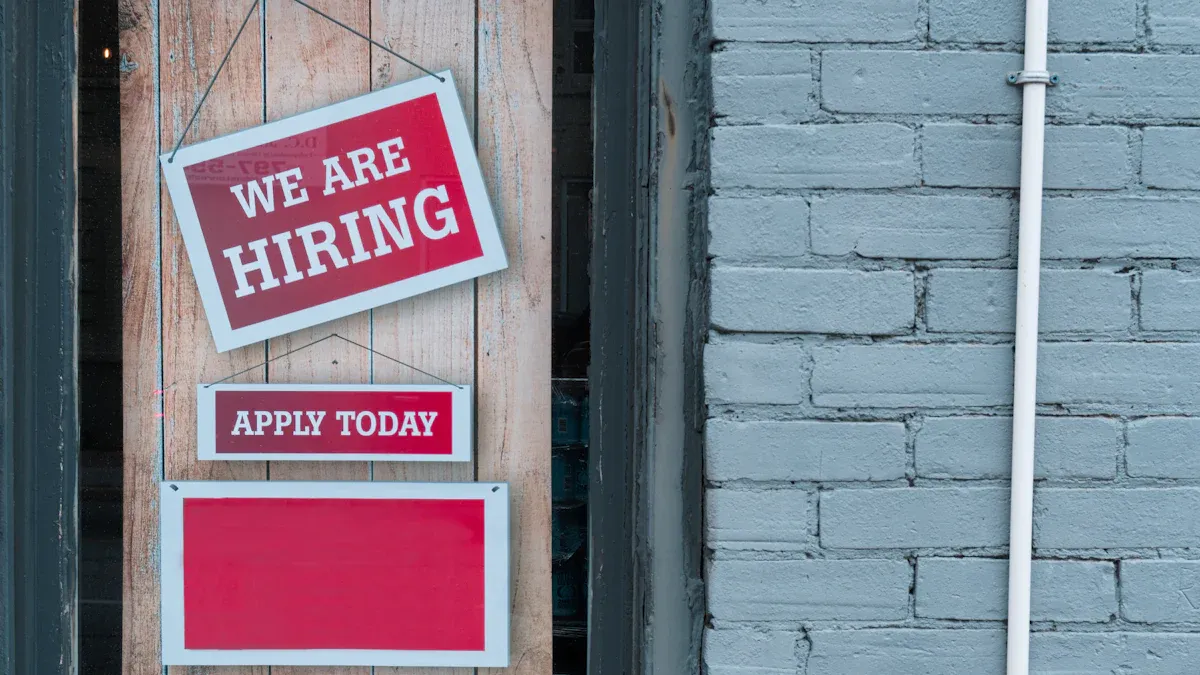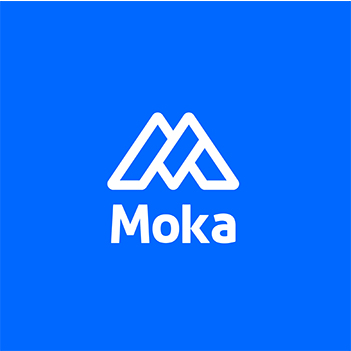AI or Humans Who Writes Better Job Descriptions

When it comes to writing job descriptions, the debate over 'AI-Generated Job Descriptions: Are They More Effective?' is not always straightforward. AI shines in areas like speed and consistency. For example, AI tools like ChatGPT can generate hundreds of ideas in minutes. In one study, AI produced 200 product ideas in just 15 minutes, while humans managed only 5. That’s 40 times faster! AI also scored higher in creativity, with 87.5% of the best ideas coming from AI compared to just 12.5% from humans.
However, humans bring something unique to the table—emotional intelligence and the ability to tell a story. They can craft descriptions that feel personal and resonate with candidates on a deeper level. So, which is better? It depends on what you need. Sometimes, a hybrid approach works best, combining AI’s efficiency with the human touch, especially when considering the effectiveness of AI-generated job descriptions.
Key Takeaways
AI writes job descriptions fast, saving time for hiring needs.
Humans use emotions and stories to make descriptions personal.
Mixing AI speed with human ideas makes better job descriptions.
AI lowers bias, making descriptions fair and good for everyone.
Check AI-made content often to match your company’s values.
AI-Generated Job Descriptions: Are They More Effective?

Advantages of AI-Generated Job Descriptions
Speed and Efficiency
When it comes to speed, AI-generated job descriptions are hard to beat. Imagine needing dozens of job postings ready in minutes. AI tools can handle that with ease. They automate the process, saving you hours of manual work. For example, AI can draft multiple descriptions in just a few clicks, which is a game-changer for companies hiring at scale. This speed doesn’t just save time—it also helps you respond quickly to changing hiring needs.
Consistency and Standardization
AI ensures your job descriptions stay consistent across the board. Whether it’s tone, structure, or formatting, everything looks polished and professional. This uniformity is especially helpful when you’re managing a large number of postings. Take a look at how AI improves consistency:
Evidence Type | Description |
|---|---|
Uniformity in Tone, Structure | Ensures uniformity in tone, structure, and formatting across job postings. |
Error Reduction | Reduces errors and inconsistencies in job descriptions. |
With AI, you don’t have to worry about typos or formatting errors slipping through the cracks. It’s like having a built-in quality control system.
Inclusivity and Bias Reduction
AI tools are also great at reducing bias in job descriptions. They analyze language to ensure it’s inclusive and welcoming to a diverse range of candidates. For instance, AI can flag gendered terms or phrases that might unintentionally discourage certain applicants. This makes your postings more appealing to a broader audience, helping you attract top talent from all backgrounds.
Limitations of AI-Generated Job Descriptions
Lack of Personalization
While AI is efficient, it often lacks the personal touch. Job descriptions can feel robotic or generic, which might not resonate with candidates. For example:
Limitation | Description |
|---|---|
Lack of Personalization | AI-generated job descriptions often feel robotic and lack the warmth or creativity that a human writer can bring, making postings less engaging. |
If you want to highlight your company’s unique culture or values, you’ll likely need to step in and add that human element.
Creativity and Contextual Understanding
AI struggles with creativity and understanding context. It might miss subtle details or nuances that make a job description stand out. For instance, AI might not fully grasp the importance of teamwork in your company or the specific skills a role requires. This can lead to descriptions that feel vague or overly broad.
Risk of Over-Reliance
Relying too much on AI can also be risky. If you depend solely on AI, you might lose the ability to craft compelling job descriptions yourself. Plus, AI isn’t perfect—it can make mistakes or produce content that doesn’t align with your brand. It’s always a good idea to review and refine AI-generated content to ensure it meets your standards.
Strengths and Drawbacks of Human-Written Job Descriptions
Strengths of Human-Written Job Descriptions
Emotional Intelligence and Storytelling
When it comes to connecting with candidates, nothing beats the human touch. You can craft job descriptions that tell a story, making the role and your company come alive. A skilled writer knows how to highlight achievements and align them with what your company needs. This creates a compelling narrative that grabs attention and resonates with potential hires. Emotional intelligence also plays a big role here. You can use language that feels warm and inviting, making candidates feel valued even before they apply.
Contextual Understanding
Humans excel at understanding the nuances of a company and its roles. You can tailor job descriptions to reflect your company’s culture, values, and specific needs. For example:
You might emphasize teamwork if collaboration is a core value.
You can highlight unique perks or benefits that set your company apart.
This level of detail ensures your job postings are accurate and appealing, something AI often struggles to achieve.
Flexibility and Adaptability
Human writers can adapt on the fly. If hiring needs change or a role evolves, you can quickly tweak the description to match. This flexibility is invaluable, especially when you’re dealing with niche roles or industries. Unlike AI, you can adjust tone, style, or focus based on the target audience, ensuring the description feels relevant and engaging.
Drawbacks of Human-Written Job Descriptions
Time-Consuming Process
Writing job descriptions manually takes time—sometimes a lot of it. You might spend hours brainstorming, drafting, and revising to get it just right. Here’s how it compares to AI:
Aspect | Human-Written Job Descriptions | AI-Generated Job Descriptions |
|---|---|---|
High (takes significant time) | Low (produces in minutes) | |
Scalability | Limited (hard to scale quickly) | High (can handle multiple roles) |
If you’re hiring for multiple positions, this process can quickly become overwhelming.
Subjectivity and Inconsistencies
Human writers bring their own perspectives, which can sometimes lead to inconsistencies. One writer might focus on technical skills, while another emphasizes soft skills. This variability can make it harder to maintain a consistent tone and structure across all your job postings.
Limited Scalability
Scaling human-written job descriptions is tough. If you’re hiring for dozens of roles, it’s nearly impossible to keep up without a large team. AI, on the other hand, can generate multiple descriptions in minutes, making it a more scalable option for high-volume hiring.
Tip: To save time and maintain consistency, consider combining human creativity with AI efficiency. This hybrid approach can help you strike the perfect balance.
The Hybrid Approach: Combining AI and Human Efforts

Leveraging AI for Efficiency
Using AI to draft initial versions of job descriptions.
AI can handle the heavy lifting when it comes to drafting job descriptions. It generates initial versions in minutes, saving you hours of manual work. For example, companies have reported significant time savings, with AI reducing drafting time from hours to mere minutes. This efficiency allows you to focus on other critical tasks while ensuring job descriptions are ready quickly.
Metric | Improvement |
|---|---|
Time savings | Drafting in minutes instead of hours |
Productivity increase | Average of 66% increase in productivity |
Inclusivity improvement | 27% increase in female representation in management roles |
Automating repetitive tasks like formatting and grammar checks.
AI tools excel at automating tedious tasks. They ensure proper formatting, check for grammar errors, and even flag biased language. This automation reduces mistakes and keeps your job descriptions polished and professional. For instance, Unilever used AI to anonymize profiles and analyze job descriptions, achieving a 27% increase in female representation in management roles. These tools not only save time but also help you create inclusive postings.
Adding the Human Touch
Editing AI drafts to include company culture and unique details.
AI-generated drafts often lack the warmth and personality that resonate with candidates. By revising these drafts, you can infuse them with your company’s unique voice and values. This step ensures the job description reflects your culture and stands out to potential hires.
Ensuring creativity and emotional resonance in the final version.
Human input adds creativity and emotional depth that AI struggles to achieve. You can craft descriptions that connect with candidates on a personal level. For example, Dell saw a 300% increase in diverse candidates by combining AI-driven metrics with human revisions. This blend ensures your postings are both efficient and engaging.
Practical Tips for Implementation
Choose AI tools that align with your organization's needs.
Not all AI tools are created equal. Select ones that fit your goals, whether it’s improving inclusivity or speeding up the hiring process. Regularly updating these tools with relevant data ensures they remain effective.
Train HR teams to effectively collaborate with AI systems.
Training your HR team is key to success. Help them understand AI’s supportive role and how to balance automation with human input. Offer sessions to overcome resistance and emphasize the importance of human oversight. This collaboration ensures job descriptions align with your company’s goals and values.
Tip: Regularly review AI-generated content to avoid bias and maintain inclusivity. Focus on qualifications rather than demographic factors to attract a diverse talent pool.
When deciding between AI and human-written job descriptions, it’s clear both have their strengths. AI excels in speed and accuracy, with an impressive 85% accuracy rate and the ability to shortlist candidates in just 10 minutes. Humans, on the other hand, bring creativity and personalization, crafting descriptions that resonate emotionally. Here’s a quick comparison:
Aspect | AI-Generated Job Descriptions | Human-Written Job Descriptions |
|---|---|---|
Accuracy Rate | 85% | 60% |
Time to Shortlist | 10 minutes | 1 hour |
Personalization | Low | High |
Creativity | Low | High |
Potential Biases | Yes | No |
A hybrid approach combines the best of both worlds. AI handles repetitive tasks, freeing you to focus on creativity and strategy. Research shows that hybrid content achieves 22% higher emotional engagement, while an optimal 15-25% human override rate ensures quality. By balancing AI efficiency with human insight, you can create job descriptions that are both effective and engaging. Ultimately, the right choice depends on your organization’s goals and resources.
FAQ
What are the main benefits of using AI for job descriptions?
AI saves you time by drafting descriptions quickly. It ensures consistency and reduces errors. Plus, it helps create inclusive postings by flagging biased language. These features make AI a great tool for high-volume hiring or when you need polished descriptions fast.
Can AI completely replace human writers?
Not really. AI lacks creativity and emotional intelligence. It can’t fully capture your company’s culture or values. You still need human input to add personality and ensure the descriptions resonate with candidates. Think of AI as a helpful assistant, not a replacement.
How do I choose the right AI tool for job descriptions?
Look for tools that align with your goals. For example, if inclusivity matters, pick one that flags biased language. Check reviews and test features like grammar checks or formatting. Always ensure the tool integrates well with your existing systems.
Is a hybrid approach better than using AI or humans alone?
Yes! A hybrid approach combines the best of both worlds. AI handles repetitive tasks, while you focus on creativity and personalization. This balance ensures your job descriptions are efficient, engaging, and tailored to your company’s needs.
How can I train my team to work with AI?
Start with workshops or tutorials on the AI tool. Show your team how to edit AI drafts and add a human touch. Emphasize collaboration, not competition. Regular practice will help them feel confident using AI as a supportive tool.
Tip: Encourage your team to review AI-generated content carefully to maintain quality and alignment with your brand.
See Also
Creating Job Descriptions That Are ATS Compliant
Using AI for Fair and Impartial Hiring Practices
Overcoming Language Challenges with Applicant Tracking Systems
Streamline Your Recruitment with MokaHR's Innovative Solutions
From recruiting candidates to onboarding new team members, MokaHR gives your company everything you need to be great at hiring.
Subscribe for more information

